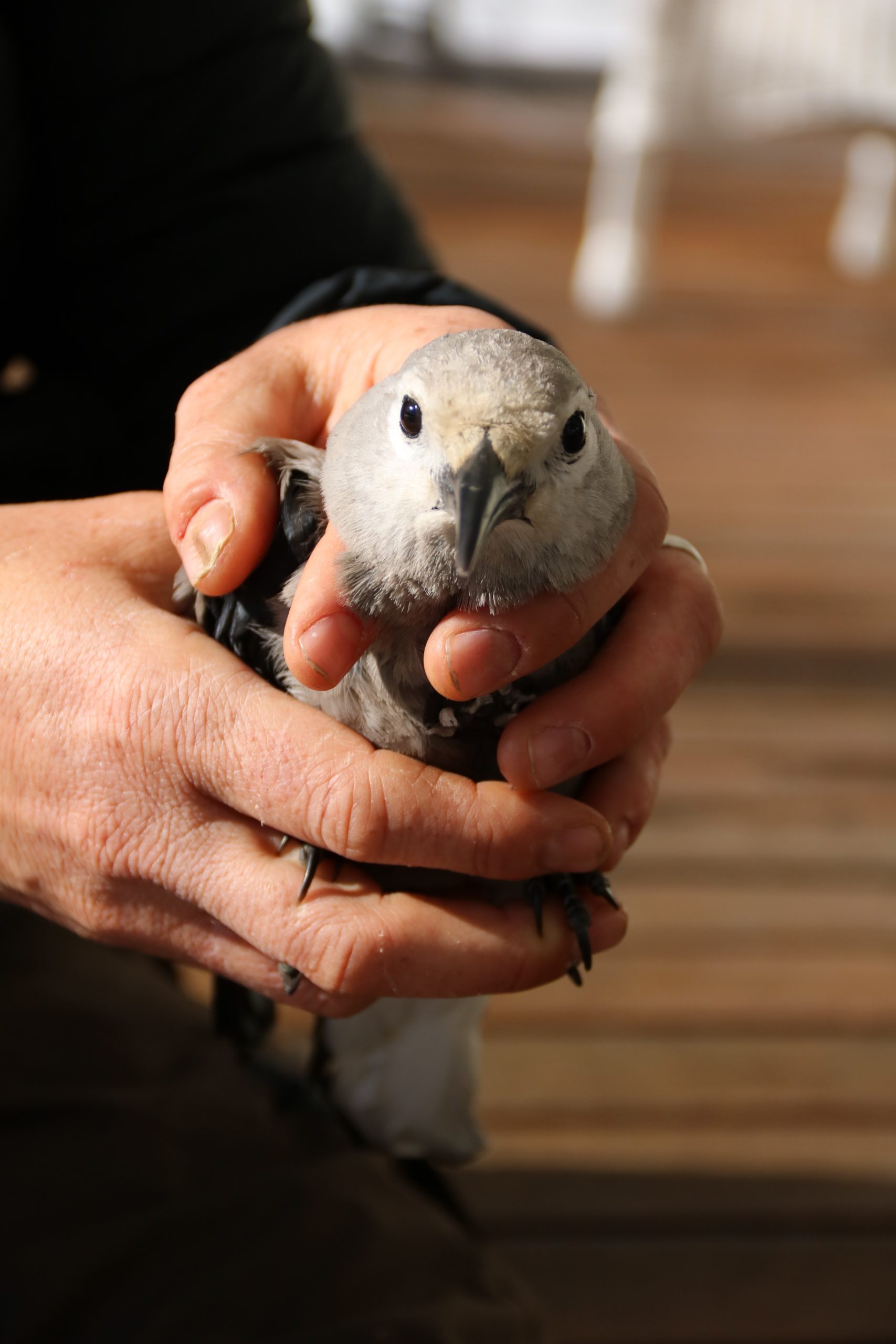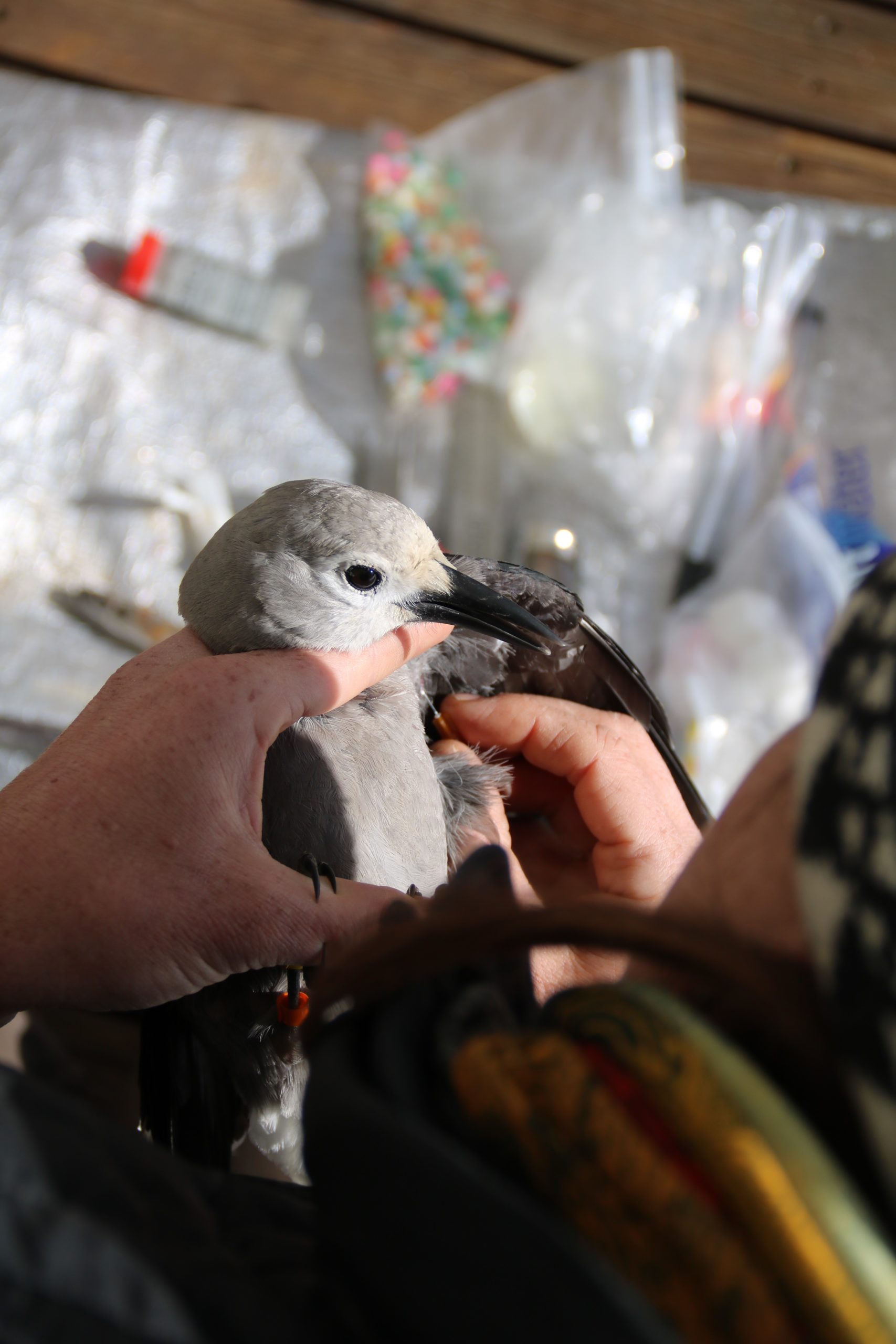Conserving Biodiversity in a Changing Climate: Understanding the Clark’s Nutcracker-Whitebark Pine Mutualism
Research Associate: Taza Schaming
Project overview: Dr. Taza Schaming is studying Clark’s nutcracker space use in the Greater Yellowstone Ecosystem and Washington’s Cascades through satellite-tracking and documenting occupancy with passive acoustic recording units.
Backstory: Whitebark pine and Clark’s nutcrackers have a fascinating relationship: the trees provide rich, fatty seeds (with more calories per pound than chocolate), and the birds “plant” the trees’ seeds —a single bird may hide up to 98,000 seeds in a year. The food caches help the birds get through the winter, and the leftovers grow into new trees. In fact, whitebark pine trees sprout almost exclusively from nutcracker seed caches. This dependency has led to considerable concern for both species because whitebark pine ecosystems are rapidly disappearing in the western United States. This disappearance, largely due to mountain pine beetles and invasive blister rust, has caused concern for the entire ecosystem. While whitebark pine restoration efforts are underway, these efforts will not be effective if Clark’s nutcracker populations decline or their habitat selection changes to a degree that they are not available to disperse seeds. We have limited information on nutcracker population status and behavior, but evidence suggests that declining whitebark pine communities are leading to reduced local Clark’s nutcracker populations.
Tromping through snow, then mud and swarms of mosquitos, Taza has been trapping, surveying, radio-tracking, and satellite-tracking nutcrackers since 2009, to study movement, habitat selection, and social behavior. Her ultimate goal is to determine which management actions will increase the persistence of nutcrackers throughout their range. This problem is more urgent than it first seems: these high altitude pines are essential to protect because they play a critical role in the ecosystem, including helping to retain snow (and thus drinking water) on the upper slopes of the western mountains, and providing high-energy nuts on which many animal species, including the grizzly bear, depend. Nutcrackers also play an important role in forest regeneration and conifer seed dispersal for not only whitebark pine, but for at least ten conifer species in western North America. A decline in nutcracker populations would affect not only whitebark pine regeneration, but long-distance dispersal of these conifer species. Taza’s results advance our understanding of the magnitude of the impact of the decline of whitebark pine on Clark’s Nutcrackers’ behavior and populations. This data will aid in the design of biologically informed management interventions which will help maintain a healthy ecosystem by ensuring persistence of nutcrackers throughout their range.
Current Status: Taza is currently analyzing the satellite data (2014-2021) and writing up a paper on nutcracker space, the first to include data at a geographically relevant scale for nutcrackers. She is still satellite-tracking two nutcrackers tagged in 2018, and she will fit at least six more tags to nutcrackers in eastern Washington in March 2022. Taza is also working with Central Washington University on the second season of fieldwork using passive acoustic monitoring units to determine how nutcracker occupancy relates to habitat variables in whitebark pine ecosystems of Washington’s Cascades. This is a long-term study which will expand in 2022 to include a pilot group of citizen scientists.
Project Partners: Teresa Lorenz (NRCC), Alison Scoville (Central Washington University), Peter Singleton (U.S. Forest Service), Jason Ransom (North Cascades National Park)
Project start year: 2009
Location: Greater Yellowstone Ecosystem, Washington’s North Cascades
Project Website: http://www.thenutcrackerecosystemproject.com/







